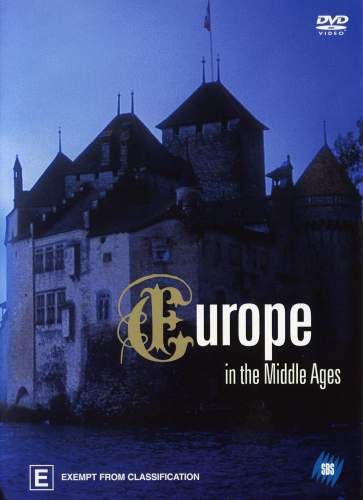The Middle Ages were dark in the literal sense of the word: apart from precious wax, which hardly anyone could afford, there was in fact no other form of illumination. Scholars begged God for light to enable them to pursue their studies. In fact, the "Dark Ages" between 800 and 1500 were a brilliant, dynamic time that paved the way for many achievements of our modern day world. This four part documentary series throws light on an epoch of major importance. Experimental historical research illustrates the impact the Middle Ages had on the Modern Age.Program One ~ Knights and Tournaments
Picturesque castles, noble knights, minnesingers and troubadours - these romantic images fire our imagination in the generally accepted conception of the Middle Ages. On the darker side of this world, there were gloomy castle dungeons, torture chambers and bloody raids and power struggles. The courtly culture of the armoured knights formed a castle with its own code of honour in which the art of war and chivalry played an important role. The castles represented a cosmos of their own: fortress, residence, army camp, customs post and hideout.
Program Two ~ Monks and Heretics
As centres of missionary activity and science, monasteries made an important contribution to progress. Here, not only theology was taught and studied, but medicine, mathematics, astronomy, law, and philosophy as well. With the translation of the ancient scripts into Latin, this knowledge was introduced to the Western World. However, the monasteries were not only places of devout worship and chastity, intrigues, power struggles and love affairs were not unknown to them either.
Program Three ~ Peasants and Nobles
Most of the population in the Middle Ages lived in the country - a silent, suffering majority, who as serfs had to do soccage service and pay taxes to the ruling noblemen and were repeatedly exposed to famine and violent conflicts. Fear of bears, wolves and demons, or roaming bands of robbers were widespread and today, folktales and legends still give us an insight into the former peasant culture. And yet, it too, made a considerable contribution to progress through inventions such as the horse's harness, the iron plough, the introduction of windmills and the three-field system, or the cultivation of new types of grain.
Program Four ~ Cities and Cathedrals
Historians for a long time considered the picturesque mazes of alleyways in mediaeval towns to be construction planning gone haywire. New research reveals the surprising fact that many mediaeval towns were conceived on the drawing board by urban planners who were well versed in geometry, for the towns grew and offered a home to many people. Even outsiders such as swindlers, beggars and charlatans found shelter, for the influence of the feudal lords ended before the town gates. In the freedom of the towns, the guilds and bourgeois society flourished. Mechanical tower clocks heralded a new rhythm of life, the first universities were founded, trade and industry followed suit.

